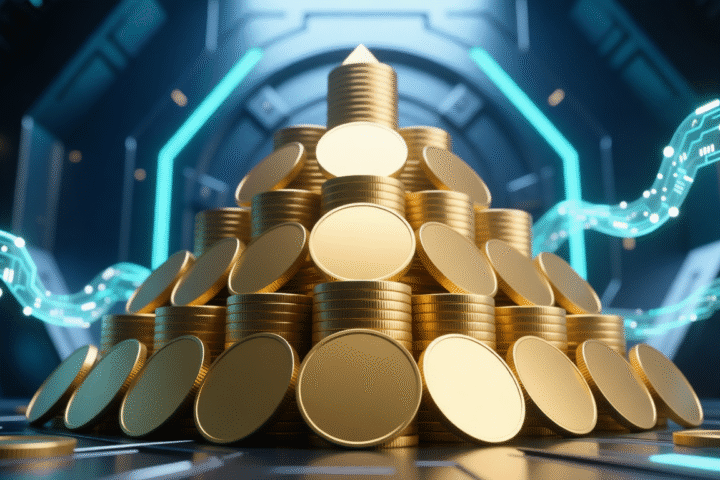Ever wondered why some crypto projects literally destroy their own tokens? Welcome to the world of token burning, a curious ritual that sounds destructive but is actually one of the most strategic moves in crypto. In simple terms, token burning means permanently removing coins from circulation, poof, gone forever.
Key Points:
- Token burning means permanently removing coins from circulation to control supply, influence value, and signal project confidence.
- Projects burn tokens for reasons like boosting scarcity, rewarding holders, stabilizing ecosystems, managing governance, or celebrating milestones.
- Burning can build trust and reduce inflation, but it doesn’t guarantee higher prices, its impact depends on real demand and purpose.
But here’s the twist: this “destruction” is often meant to create value. By reducing the total supply, projects can make their remaining tokens more scarce, which can influence price, stability, and community confidence. It’s one of those ideas that perfectly sums up crypto’s weird genius, sometimes, less really is more.
What Is Token Burning?
So, what exactly is token burning? Think of it as a blockchain version of taking money, locking it in a box, and throwing that box into space, no one’s ever getting it back. In crypto, this happens when tokens are sent to what’s called a burn address, a special wallet that can receive tokens but can’t ever send them out again. Once those tokens land there, they’re effectively gone for good.
The best part? You can actually see it happen. Because everything in crypto lives on a public blockchain, every token burn is recorded and verifiable. Anyone can check the burn address and confirm that the project really did what it said it did. No secret vaults, no shady backroom deals, just a transparent, blockchain-powered way of saying goodbye to a few tokens forever.
How Does Token Burning Work?
Let’s break it down step-by-step so it’s easier to picture how token burning actually happens.
1. A Project Decides to Burn Tokens
Maybe it wants to reduce the total supply, reward long-term holders, or boost scarcity. Whatever the reason, the team sets an amount of tokens to be burned.
2. The Tokens Are Collected
Sometimes, a crypto project uses profits to buy back its own tokens from the market, kind of like a company buying back its stock.
3. The Tokens Are Sent to a Burn Address
This is a one-way destination on the blockchain that no one controls. Once tokens land there, they’re gone forever.
Related: Jump Trading Faces $4B Lawsuit For Rigging the Terra Collapse
4. The Blockchain Records It
Because every transaction is public, anyone can confirm that the burn actually happened. Transparency is built right into the process.
So, whether it’s to boost value, power a protocol, or just make things a little more exciting, token burning keeps the crypto ecosystem lively, and a bit smoky.
Why Do Crypto Projects Burn Tokens?
Token burning isn’t just a flashy stunt. Projects do it for a bunch of reasons, some practical, some symbolic, and some just to keep the community hyped. Here’s why the flames keep burning:
- To reduce supply and increase scarcity – This is the classic reason. Fewer tokens in circulation can make each one more valuable, at least in theory. It’s the same logic that makes limited-edition sneakers sell out fast, scarcity drives demand.
- To reward holders and build long-term confidence – When a project burns tokens, it signals to holders that it’s committed to the ecosystem’s health. It’s like saying, “We’re in this for the long run.” This kind of move can boost trust and loyalty among investors.
- To stabilize the ecosystem – Some crypto projects use token burning as a deflationary mechanism. That means they burn a portion of tokens automatically, say, every time a transaction happens, to balance supply and demand over time. It helps prevent runaway inflation that can drag down token value.
- To manage governance or utility models – In decentralized finance (DeFi) or decentralized autonomous organizations (DAOs), burning tokens can fine-tune how governance works. By reducing the overall supply, it can shift voting power, control inflation within the system, or adjust the cost of participating in network activities.
- To celebrate milestones or community wins – Sometimes, projects burn tokens to mark big achievements, like hitting a certain user count or completing a major upgrade. It’s a way to turn progress into a moment of celebration and show appreciation for the community’s support.
Whether it’s about economics, governance, or good vibes, token burning is one of those rare crypto traditions that’s both functional and symbolic. It keeps projects flexible, focused, and connected to their communities.
The Pros and Cons of Token Burning
Like most things in crypto, token burning has two sides, some clever, some risky. Here’s the quick rundown.
Pros
1. Creates scarcity – Fewer tokens mean higher potential value. Burning makes remaining tokens more desirable by limiting supply.
2. Signals confidence – Burning shows commitment. It tells investors the project believes in its long-term vision.
Related: Pump.fun Ex-Dev Jarett Dunn Gets Six Years for $2M Theft
3. Controls inflation – Regular burns can balance out token minting, keeping the ecosystem stable and deflationary.
Cons
1. No price guarantees – Burning doesn’t automatically raise prices. Demand and utility matter more than destruction.
2. Sometimes just hype – Some projects use burns for attention without real purpose. Always check the fundamentals.
3. It’s permanent – Once burned, tokens are gone forever. A wrong move can’t be reversed.
In short, token burning can spark real value, or just smoke. It all depends on why and how it’s done.
Burning Isn’t Destruction, It’s Strategy
At first glance, token burning might sound wild, why would anyone destroy their own tokens? But as you’ve seen, it’s not chaos, it’s control. By permanently removing tokens from circulation, crypto projects can shape supply, signal confidence, and fine-tune the balance of their ecosystems.
So the next time you hear about a burn event, don’t picture a bonfire of wasted coins. Think of it as a strategic move in the ever-evolving dance between scarcity, demand, and trust. Burning isn’t destruction, it’s design.












